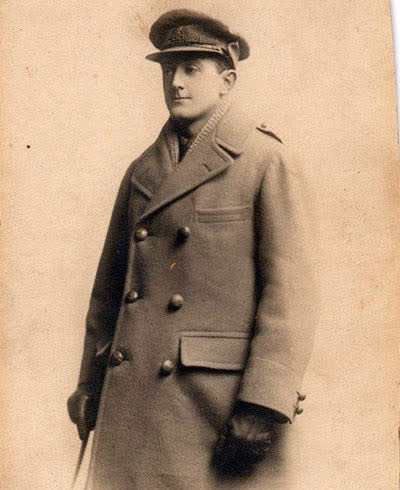One war was not enough for courageous WA Digger

One can only imagine the surprise when the recruiting officers in World War II read details provided by Joseph Eric Piercy.
Date of birth: September 17, 1890. Previous active service: 11th Battalion and 16th Battalion Australian Imperial Force.
Piercy’s military pedigree was from the very top shelf, for he had been a member of not one but two of WA’s most famous World War I battalions.
As his daughter Glenis Piercy observed, her father was “a military man through and through”.
The youngest of seven children, Piercy had been born in South Australia and had moved with the family to Perth.
He was working at the Midland Railway Workshops when war broke out in 1914 and was one of the first to answer the call.
He signed up on September 2 and joined the 11th as it trained at Blackboy Hill camp at Greenmount, before sailing from Fremantle on the Ascanius on October 31, 1914, to Egypt. Piercy was among Diggers who gathered on January 10, 1915, to be photographed on the Cheops Pyramid.
The West Australian is supporting a WA Genealogical Society project to name the 703 men in the famous image. WAGS has divided a digital copy of the photograph into grids, so each man is numbered, and is encouraging readers who believe they know the identity of men in the image to make contact.
Piercy has been identified as soldier 32 on the grid. The 11th Battalion, along with the 9th, 10th and 12th Battalions, formed the 3rd Brigade, the covering force for the Anzac landing at Gallipoli on April 25, 1915, and was the first ashore about 4.30am.
Ms Piercy said her father had received a gunshot wound to his left leg not long after the landing, and was evacuated to hospital at Malta and then Britain.
It was the first of several stays in hospital during the war as he returned to Egypt and then embarked for the Western Front, where he was again wounded.
Ms Piercy said her father transferred to the 16th Battalion in February 1917. He was later decorated for bravery, awarded the Military Cross and Bar.
His citation for the cross said he led a forward party in a raid, had destroyed the enemy’s protective wire and attacked an enemy trench, “killing several of the enemy who offered resistance”.
He then “satisfied himself that no wounded had been left behind and used his men to cover the retirement of the remainder of the raiding party”.
He was awarded the bar when, “in spite of artillery fire at close range”, he obtained cover for his men, “saving many casualties”.
Piercy led his men “in a most skilful and daring manner” and despite being wounded had “remained to superintend the work of consolidation”.
After WWI he ran a hotel in Busselton and married Enid Pearl Cooke in 1938.
The couple had one child, Glenis, and Piercy enlisted again in 1940, becoming an instructor and working with army intelligence.
After WWII Piercy worked for the government helping returned soldiers settle farms.
He died in 1967.

